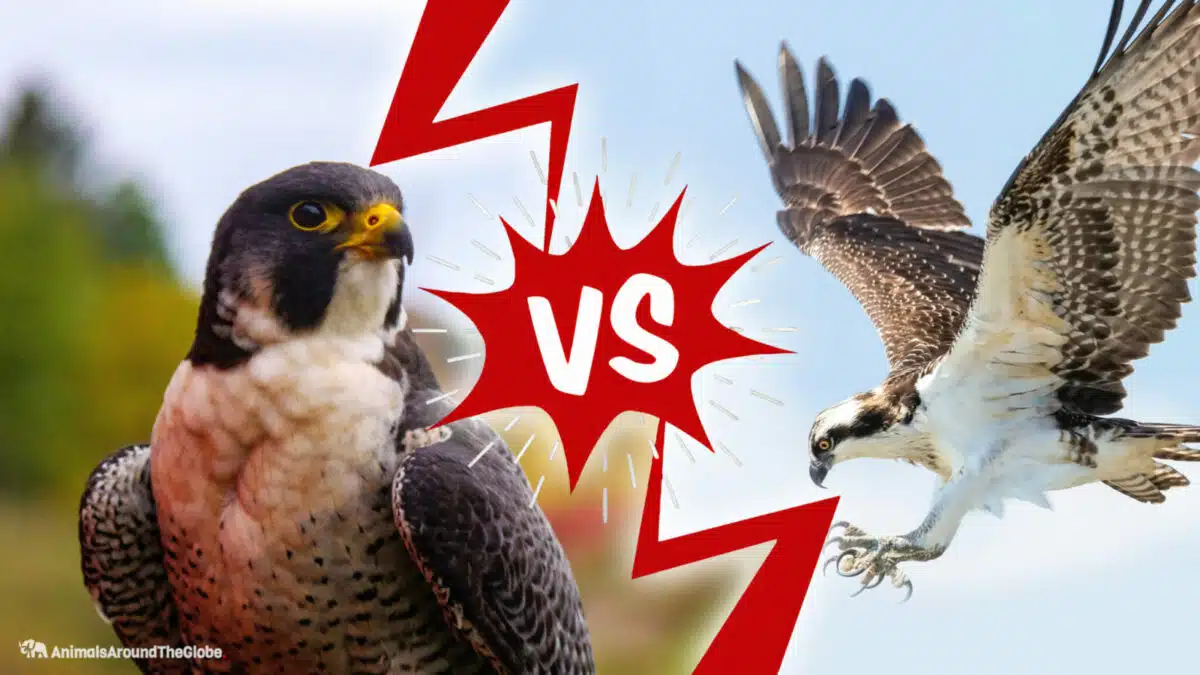Both the falcon and hawk have many features that make them ideal predators: sharp beaks, deadly claws and incredible flying abilities. But how do they differ from one another? Let’s compare the falcon vs. hawk!
Falcons and hawks are birds of prey; birds of prey are predatory birds that actively hunt and feed on other vertebrates, including other smaller birds, mammals, and reptiles.
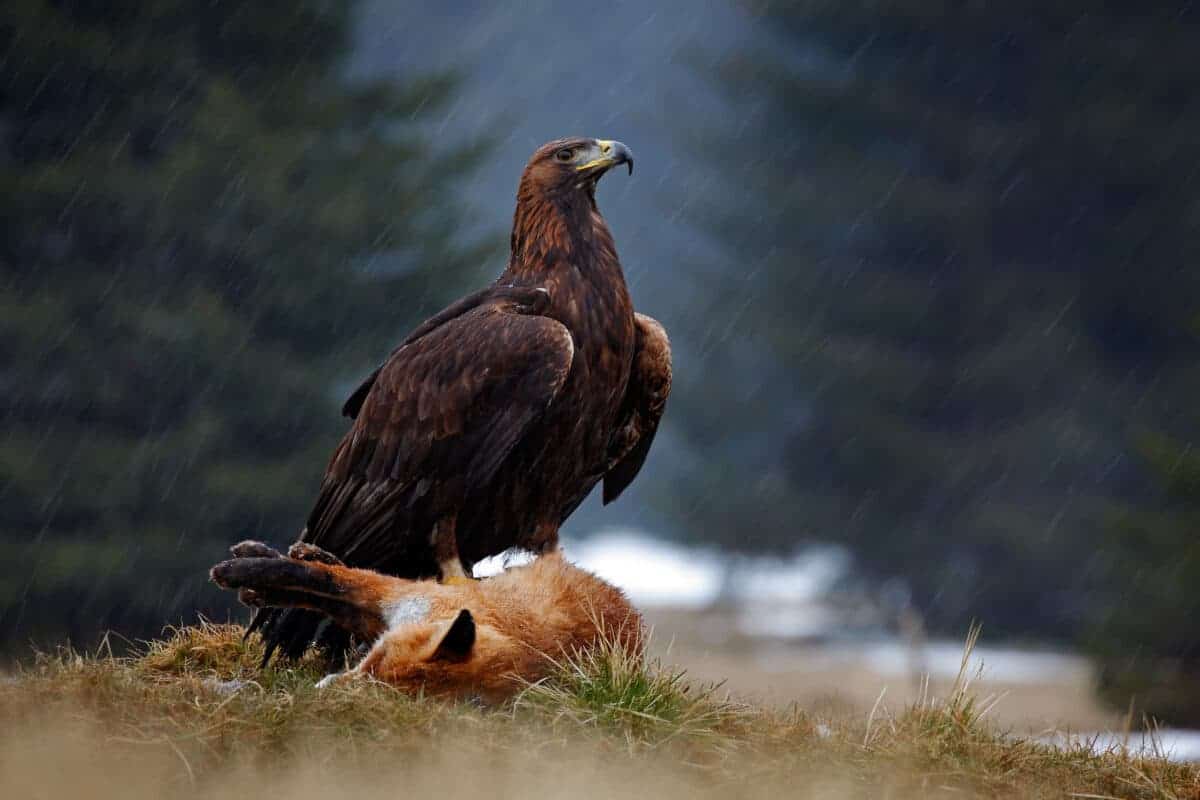
Both these birds have immense speed and strength; they also have excellent eyesight and can spot their prey from far out. They have strong feet with sharp talons for grasping prey, as well as powerful and curved beaks for tearing off the flesh.
Now let us look at the different characteristics of these predatory birds:
Falcon vs. Hawk
Certainly, here’s the information presented in a table format for easier reference:
| Characteristic | Hawks | Falcons |
|---|---|---|
| Size | 12-28 inches Length (large) | 13-23 inches Length (petite to medium) |
| Coloration | Brownish & greyish plumage, pale, striped underside | Black-barred wings (females), bluish-grey (males) |
| Wings | Wide, rounded, short; wingspan 26-63 in | Pointed, slender, long; wingspan 29-47 in (peregrine) |
| Head Shape | Smooth, pointy heads | Round, short heads |
| Habitat | Adaptable; woodlands, forests, rural areas, deserts, fields, mountainous plains, tropical areas | Usually open country |
| Taxonomy | Subfamilies Accipitrinae and Buteoninae in family Accipitridae and order Accipitriformes; 2 groups; over 250 species | Genus Falco in subfamily Falconidae, family Falconidae, and order Falconiformes; 3-4 groups; 37 species |
| Killing Method | Feet and talons | Tooth on beak |
| Diet | Small mammals, ground vertebrates, smaller birds | Ground vertebrates, smaller birds |
| Nests | High in trees | Tree hollows |
| Flying Style | Slow fluttering while flying in circles or brief flapping followed by gliding | Brief, rapid flapping, speed of over 100mph |
Getting To Know Falcons
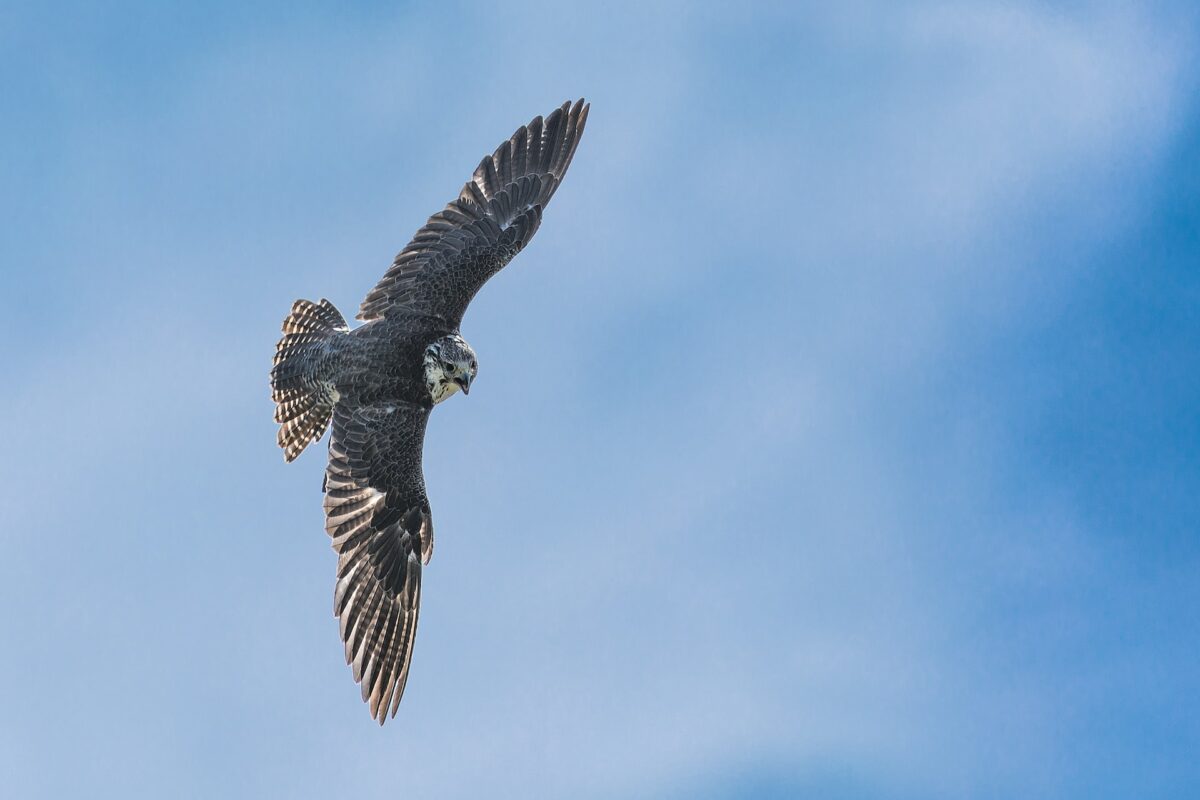
Falcons are present in all continents except Antarctica and belong to the genus Falco which includes around 40 different species. A few of the species include:
Peregrine Falcon: is the world’s quickest species of animal. Despite being fast on the wing, they fly at their highest speed when diving. This bird can dive at speeds of up to 200 mph at times. These dives capture prey before it realizes what hit it.
Seychelles Kestrel: has an average length of just 10 inches and is the smallest of the falcons. Only the Seychelles Islands, off the coast of Africa, is home to these tiny birds. The IUCN categorizes the Seychelles kestrel as vulnerable to extinction (as so many other island-endemic species.)
Gyrfalcon: is on the other end of the size spectrum and is the largest species in the family. They are 2 feet long, and some weigh more than 4 pounds. Due to their size, these birds can hunt a wide range of prey, including gulls, rabbits, and other raptor birds.
Saker falcon: Northern Africa, parts of Europe, the Middle East, and Asia are all home to the Saker Falcon. Sadly, IUCN declared Saker Falcons endangered and are currently threatened by extinction. Some of their biggest threats are the destruction of their habitat and collisions with power lines that result in electrocution.
Adult falcons have slender, tapering wings that allow them to fly quickly and change direction. In their first year of flight, fledgling falcons (young falcons are referred to as fledglings once they make their first flight) have longer flight feathers giving them a more bird-like appearance. More extended features simplify flying while learning the exceptional abilities necessary to become an effective hunter as an adult.
Check out: Falcon Confronting a Rabbit in the Air
Getting To Know Hawks
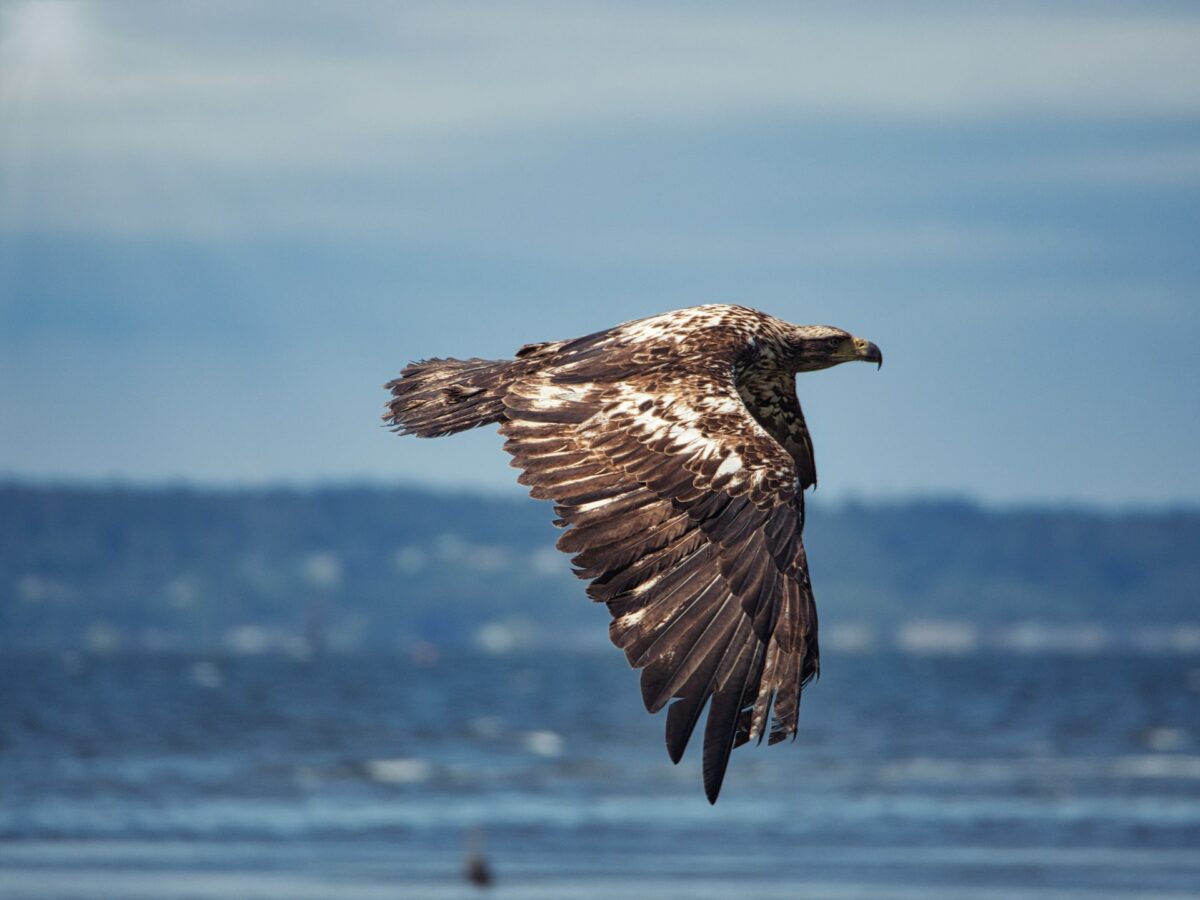
Hawks belong to the Accipitridae family, and like falcons, they are present on all continents except Antarctica. There are two groups of hawks, Buteos and Accipitrinae. Buteos, also called buzzards in some parts of the world, typically have solid bodies and broad wings. They can travel farther in open spaces than accipiters because they have considerably longer wings and shorter tails.
Accipitrinae (they include goshawks, sparrowhawks, sharp-shinned hawks, and others), on the other hand, are primarily woodland birds with long tails and very sharp vision.
Habitat of Falcons
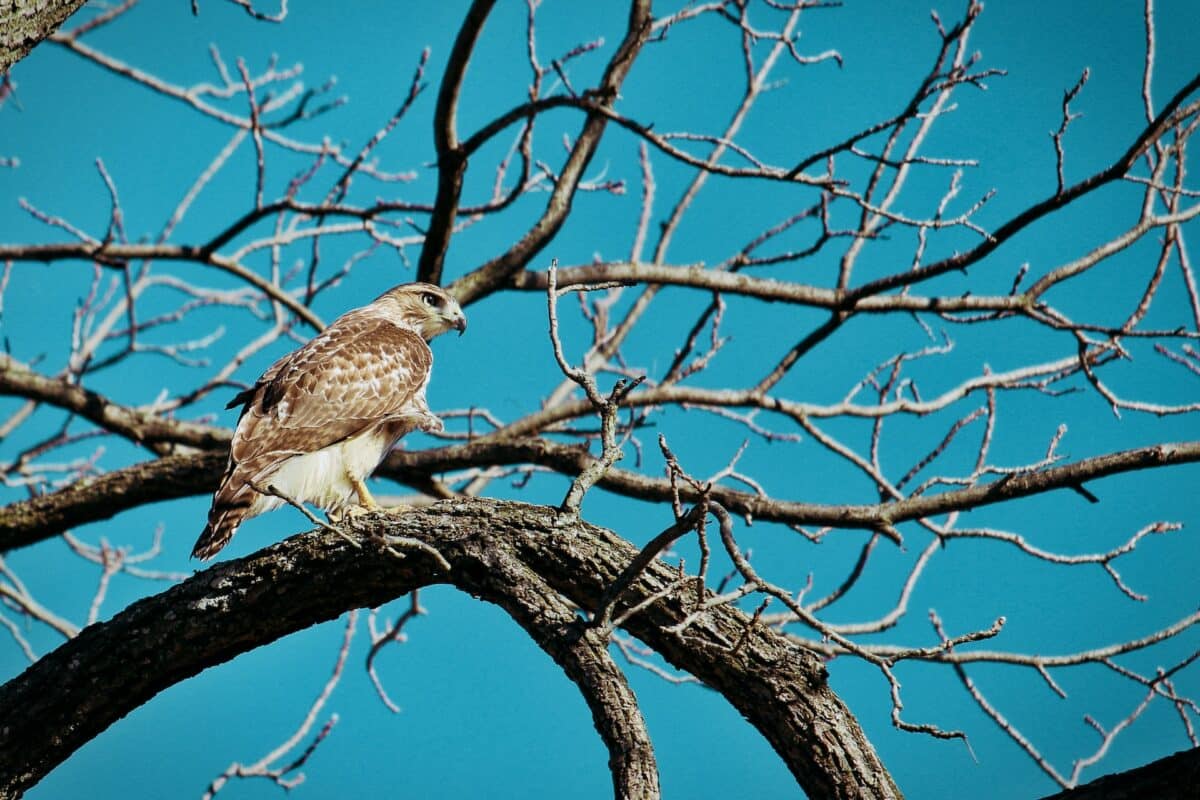
Falcons are a global presence, adapting to a wide range of habitats, from the Arctic tundra to arid deserts. These versatile birds make their homes in diverse environments like grasslands, wetlands, mountains, forests, estuaries, taiga, scrublands, and beyond.
Certain species have thrived in urban environments, thriving in places like farms, parks, gardens, and bustling cities. Despite their shared habitat types, each falcon species exhibits distinct preferences for where they make their homes.
Habitat of Hawks:
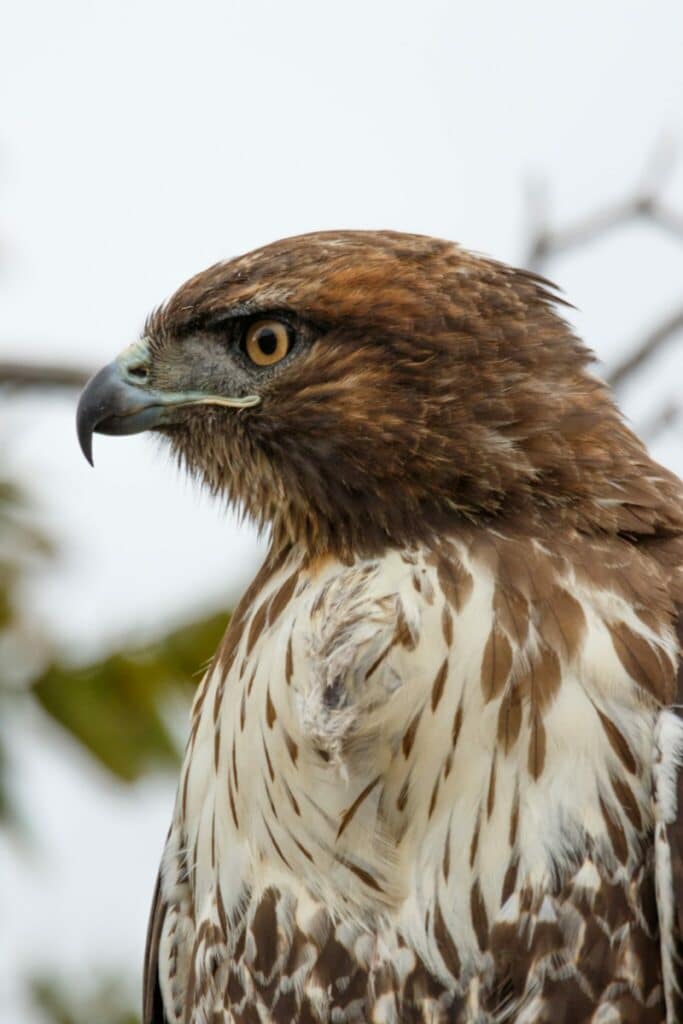
Hawks can quickly adapt to any surroundings. Past research has shown that they prefer an open habitat. They typically prefer to live in areas like deserts and fields where it is more probable that they will find prey. They are also found in mountainous plains and tropical, humid regions since they can survive almost everywhere.
The species live throughout North, Central, and South America, Eurasia, Africa, Australia, and the surrounding islands. Hawk species variety is much greater across South America and Africa than the remainder of their range. Every species has its own range, although numerous species have overlapping populations.
Falcon vs. Hawk: Behavior
In the hawk’s initial life, it is taken care of by its parents until it leaves home. While still in its fledgling stage, the young hawk will leave its home for the first time when it’s six weeks old. When the bird is older, it starts hunting.
Unlike other hunter birds (such as the falcon), the hawk kills its prey with its talons. The falcon utilizes its talons to catch the prey. However, it kills the prey with its beak rather than its talons.
The hawk’s favored time for hunting is typically just before nightfall. Albeit the hawk is known for not being a typical vicious hunter, some are quiet. When it flies, the hawk flaps its wings quickly and then utilizes that momentum to float smoothly through the air.
After closely analyzing the concept of flocking during migration, the conclusion is that birds and other animals use it to increase their chances of survival. It has become evident to observers that a hawk traveling in a flock has a higher possibility of survival than if it traveled solo.
Outside the breeding season, falcons usually live alone, like most birds of prey. Some species do, however, gather near abundant food sources. They scavenge for food and rest on high perches all day long. Some species also hunt around dawn or dusk in the early morning or late evening. Depending on the species and region, some falcons do not migrate, while others participate in either partial or complete migrations.
Falcon vs. Hawk: Reproduction
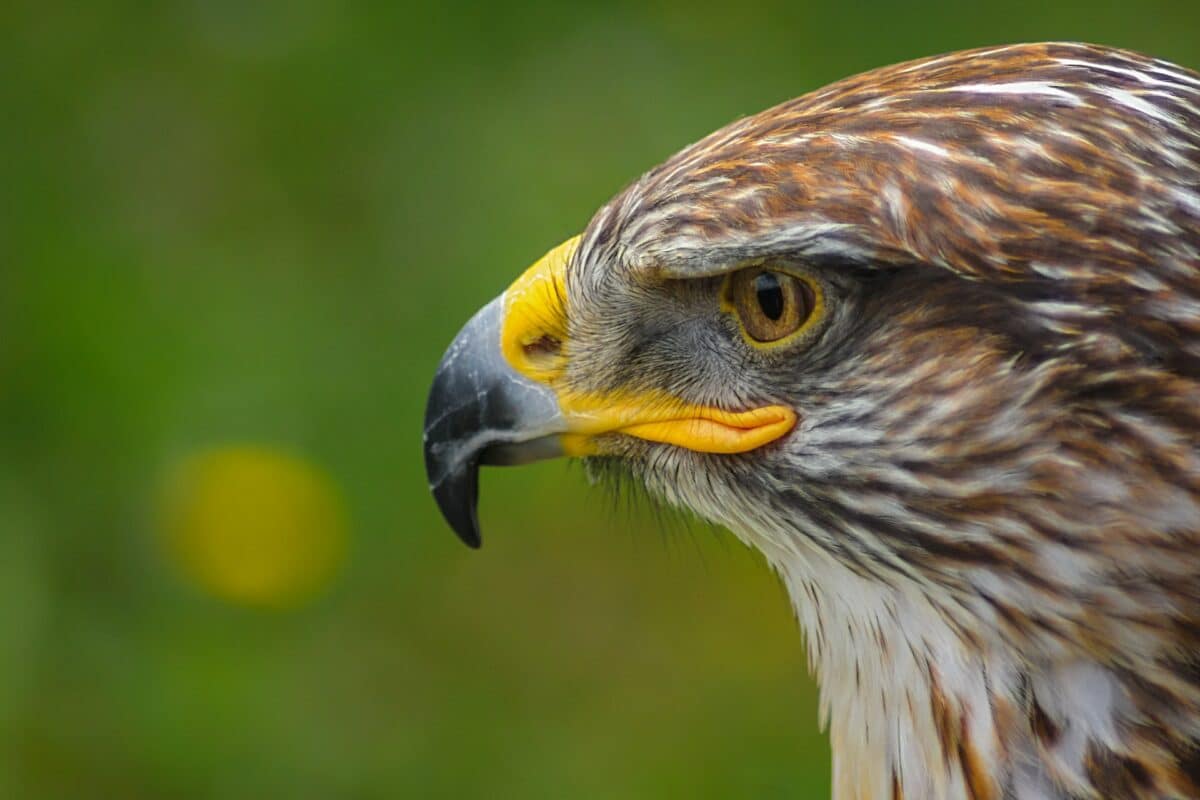
Hawks are known for having a unique mating period. The hawk’s reproduction method differs from most others; males and females will fly in sync as they circle. The male will dive toward the female once they reach a specific height before returning to it. They will continue doing this until the male catches the female, and they start to free fall to the ground. A female hawk will typically lay five eggs in a year.
For about a month before they hatch, the male and female will tend to and care for the eggs. Before the mating season, the male and female create their nest, which they then improve during the nesting season. Some hawk species tend to be monogamous, staying with the same partner their entire lives.
Falcons are monogamous too, and repeatedly breed with the same mate. They often guard a territory in the vicinity of their nesting location. Some species do, however, nest in larger bird colonies. While male falcons search for prey, females are solely responsible for incubation which typically takes a month. Different falcon species take different times to learn to fly.
Nest places for hawks and falcons are almost polar opposites. Hawks construct their nests in a high, predator-free location. Although they prefer to nest in tree hollows, falcons will happily accept bird boxes between ten and thirty feet off the ground. Determining if a nest belongs to a hawk or falcon can also be done by looking at the environment type chosen. Hawks typically stay near the tops of enormous trees.
The ability of falcons to build houses in trees and on cliff ledges and artificial structures like building ledges and bridges is well recognized.
Falcon vs. Hawk: Size
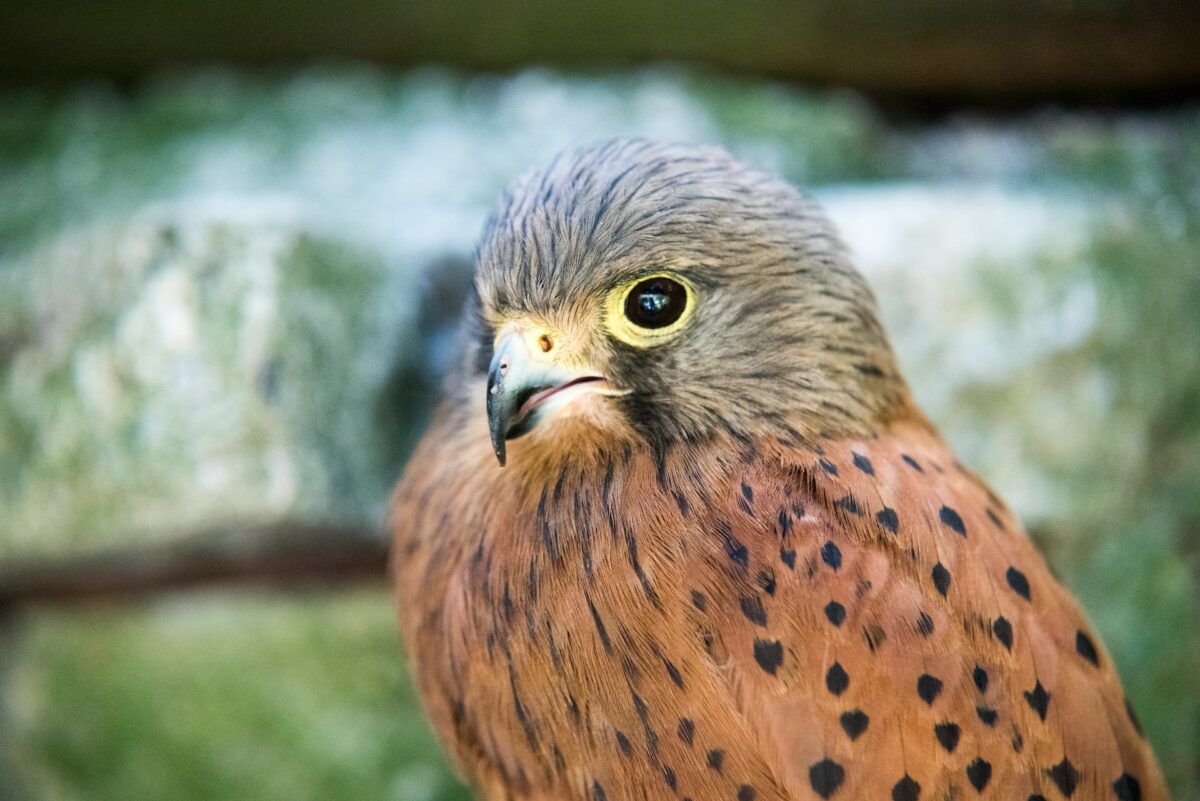
In general, Hawks are smaller birds and have shorter wings than falcons.
Hawks and falcons exhibit sexual dimorphism just like other raptors do; this is known as polyandry, when two members of the same species display distinct traits other than those related to their reproductive system.
It is imperative to note that hawks vary in size. The roadside hawk, which weighs only 9.5 ounces, is the lightest species. While hawks’ wingspan ranges from 26 to 63 inches, their length can vary from 12 to 28 inches. For instance, the white-rumped ridgway hawk has a 30-inch wingspan and an average length of 14 inches.
The largest species is the Upland buzzard, although the ferruginous hawk is the largest in the USA. They have a wingspan of 60 inches and measure 26 inches long. When fully grown, males weigh only 2.5 pounds, compared to females’ average weight of 4.4 pounds. On the other hand, the ferruginous hawk weighs the same but has larger feet and a larger bill.
Falcon birds, on the other hand, can range from 13 to 23 inches, weighing approximately 1.5 to 3.3 pounds. The largest falcon is the Gyrfalcon which can grow to a size of 2 feet (24 inches) long, whereas the smallest falcon is the Seychelles Kestrel which grows to a length of 10 inches long on average.
Falcon vs. Hawk: Diet
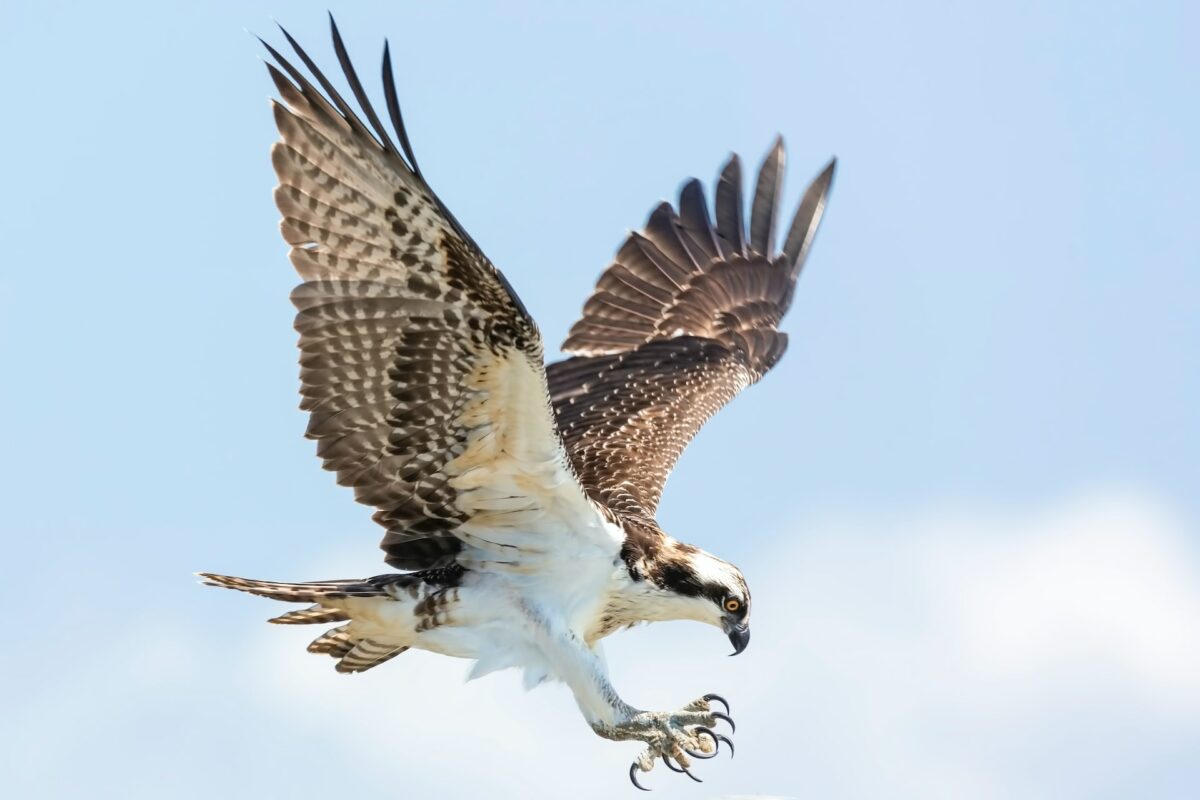
Hawks and falcons, both carnivorous birds of prey, display a wide range of dietary preferences:
Hawks:
Hawks are renowned for their adaptability and consume a broad spectrum of prey.
Their diet comprises snakes, lizards, fish, mice, rabbits, squirrels, birds, and various other small ground-dwelling creatures.
For instance, the red-shouldered hawk exhibits a penchant for smaller birds like doves, along with insects such as grasshoppers and crickets.
Falcons:
Falcons are opportunistic hunters, adjusting their diet according to what’s available in their surroundings.
They employ aerial and ground-based hunting techniques to capture their prey.
Their menu includes an eclectic mix of animals, encompassing birds, mice, rats, rabbits, voles, gulls, other raptors, snakes, fish, insects, frogs, and more.
Both hawks and falcons are adept predators that fulfill essential roles in ecosystem balance through their hunting prowess.
Falcon vs. Hawk: Life Span
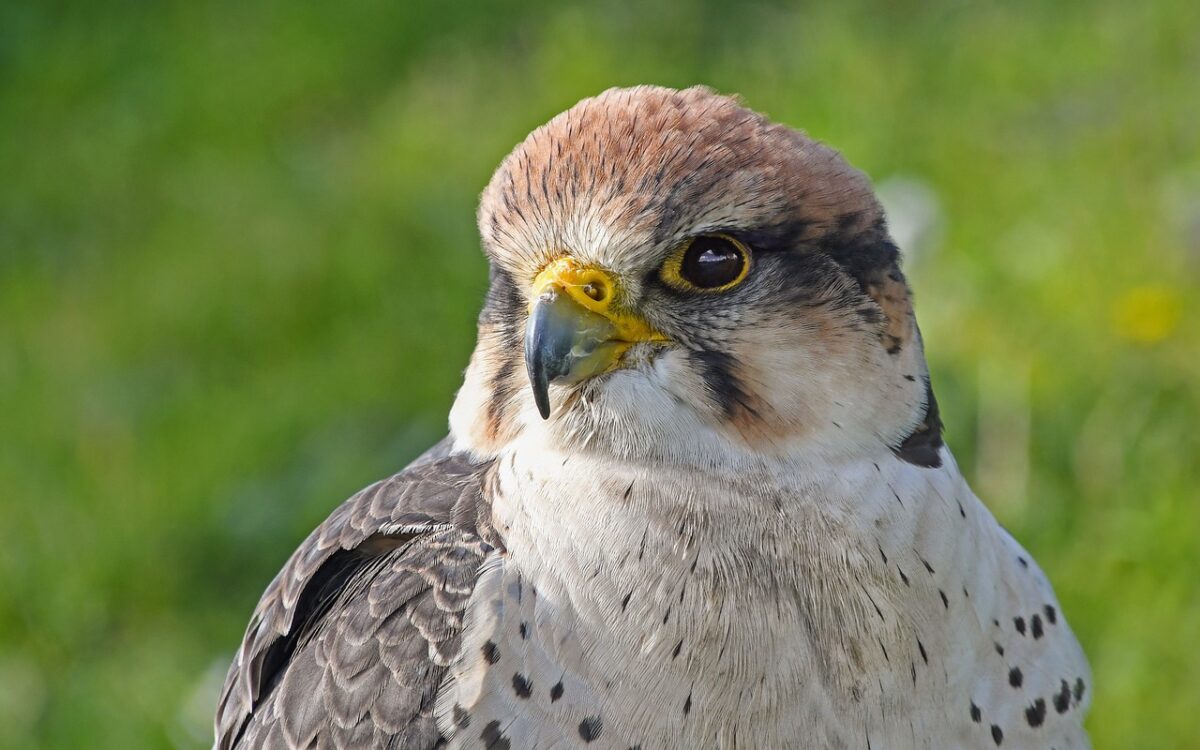
The hawks and falcons have similar life spans because they face identical threats in the wild.
Hawks generally live up to 12 years, although they can grow much older if they remain safe from predators and threats in the wild.
However, in captivity, where they are safe from all the dangers of the wild and are provided proper nutrition, hawks live up to an average age of 20 years. In some rare cases, hawks have grown as old as 30 years.
Similarly, falcons have an average life span of 12-15 years; due to the threats and predators in the wild, most falcons don’t survive the first year (60 %). This means that six out of the ten falcons that hatch will not survive their first year.
Similar to hawks, the lifespan of falcons in captivity increases, and the highest recorded age for a falcon in captivity is 25 years.
Falcon vs. Hawk: Flight Speed and Flying Style
Hawks and falcons, both carnivorous birds of prey, display a wide range of dietary preferences:
Hawks:
Hawks are renowned for their adaptability and consume a broad spectrum of prey.
Their diet comprises snakes, lizards, fish, mice, rabbits, squirrels, birds, and various other small ground-dwelling creatures.
For instance, the red-shouldered hawk exhibits a penchant for smaller birds like doves, along with insects such as grasshoppers and crickets.
Falcons:
Falcons are opportunistic hunters, adjusting their diet according to what’s available in their surroundings.
They employ aerial and ground-based hunting techniques to capture their prey.
Their menu includes an eclectic mix of animals, encompassing birds, mice, rats, rabbits, voles, gulls, other raptors, snakes, fish, insects, frogs, and more.
Both hawks and falcons are adept predators that fulfill essential roles in ecosystem balance through their hunting prowess.
Falcon vs. Hawk: Migration
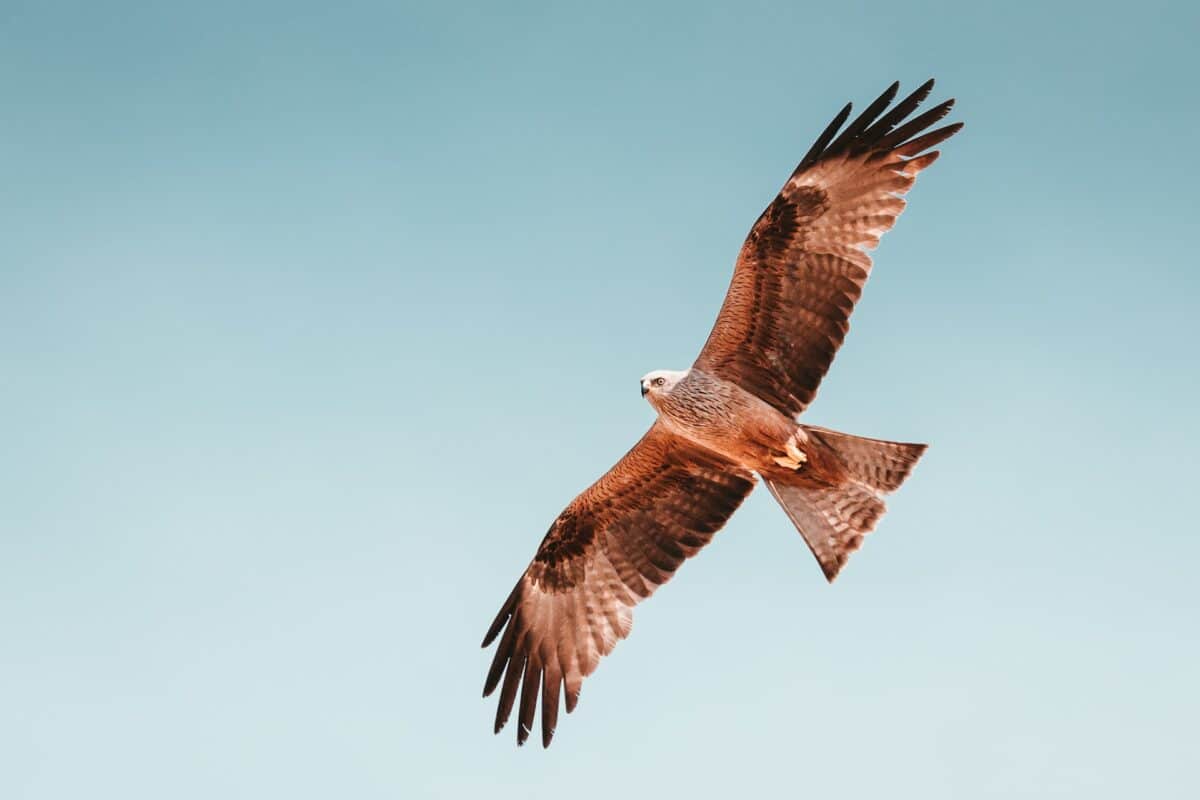
Hawks, like many other birds, engage in migration during both spring and autumn. Various types of hawks follow different schedules within these seasons. The autumn migration phase commences in August and concludes around mid-December.
Migration distances vary among hawks. Short-distance travelers start their journey later, while long-distance travelers typically commence in early autumn. Consequently, those embarking on their journey earlier cover greater distances. Research on migration efficiency and speed has revealed that hawks often arrive first. The first arrivals have the advantage of selecting their preferred mates, habitats, food sources, and other essentials for survival.
The direction of a hawk’s flight holds immense significance during migration, as it can significantly affect the bird’s journey. Depending on the wind’s direction, it may either divert the bird off course or propel it in the right direction. Hawks make efforts to circumvent substantial bodies of water during spring and fall migrations by following borders or skirting around lakes.
Falcons, on the other hand, exhibit both migratory and non-migratory behavior. When winter brings colder weather, falcons engage in seasonal migration, seeking warmer regions. Some migratory species travel only as far as the southern United States, while others venture as far as Central or South America. Interestingly, some falcons opt not to migrate at all.
For example, certain North American peregrine falcons maintain year-round residence in regions such as Alaska, the Midwest, the Northeast, the Southwest, and the western coastline. Meanwhile, other peregrine falcons undertake an annual migration from South America and the Gulf Coast to the Alaskan tundras.
Falcon vs. Hawk: Appearance
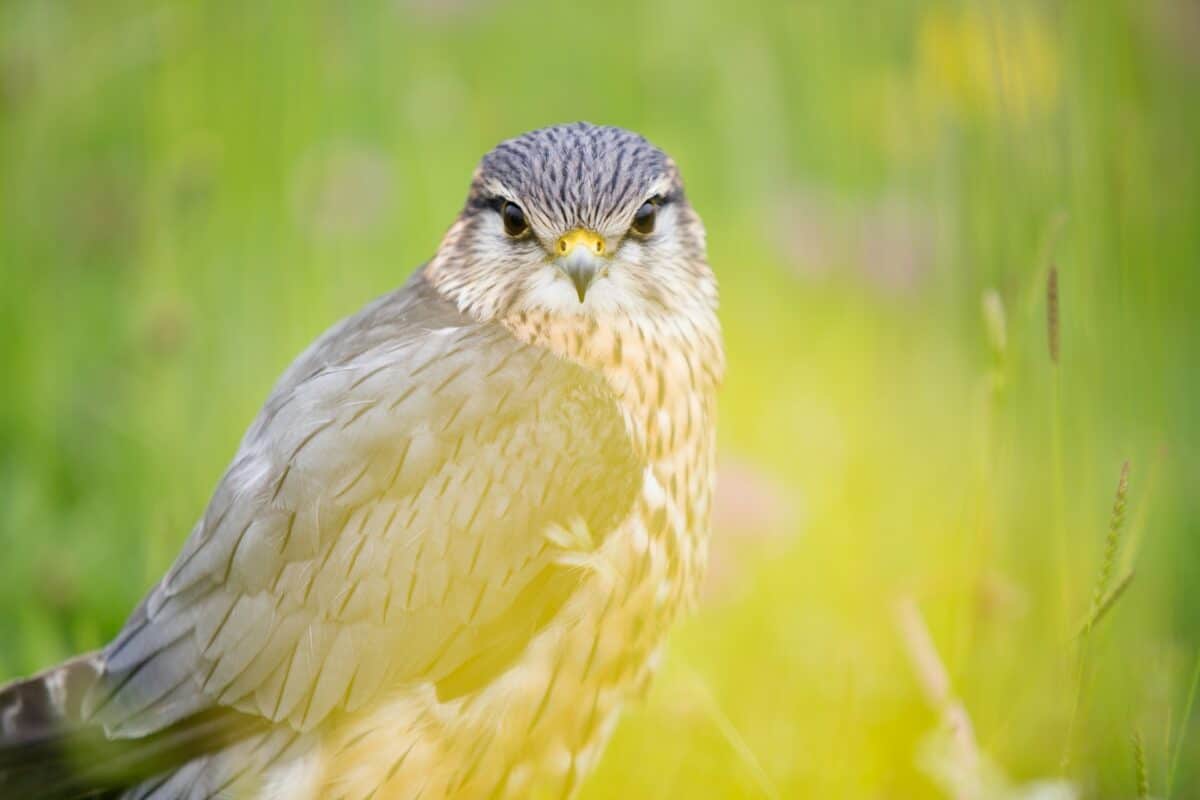
Falcons and hawks are often confused between each other due to their similar appearance; however, when observed closely, there are several differences:
Both birds have similar colors. To tell the difference, one should examine their plumage, wings, and underbelly since the details of their patterns matter.
Hawks have grayish and brownish feathers, while falcons have bluish-gray feathers with a pale, striped underside. Female falcons also have black bars on their wings.
Depending on the species, there are some other differences. Red-tailed hawks, for instance, have brown cheeks and a white belly band, while peregrine falcons have a continuous stripe behind their malar lines and white cheeks.
The distinctive characteristics of their wings are another obvious sign of difference. The hawk’s wings are short, wide, and rounded, whereas the falcon’s wings are long, slender, and pointed, as is evident even at a cursory glance. Some hawk species also have distinct feathers on the ends.
Another difference in their appearance is their head shape. The heads of the hawk and the falcon appear to be highly similar at first glance. They do, at least, until you get a closer look. If you look at the outline without the beak, you can see that the hawk’s head is long and slender, and the falcon’s head is round and short.
The Final Word
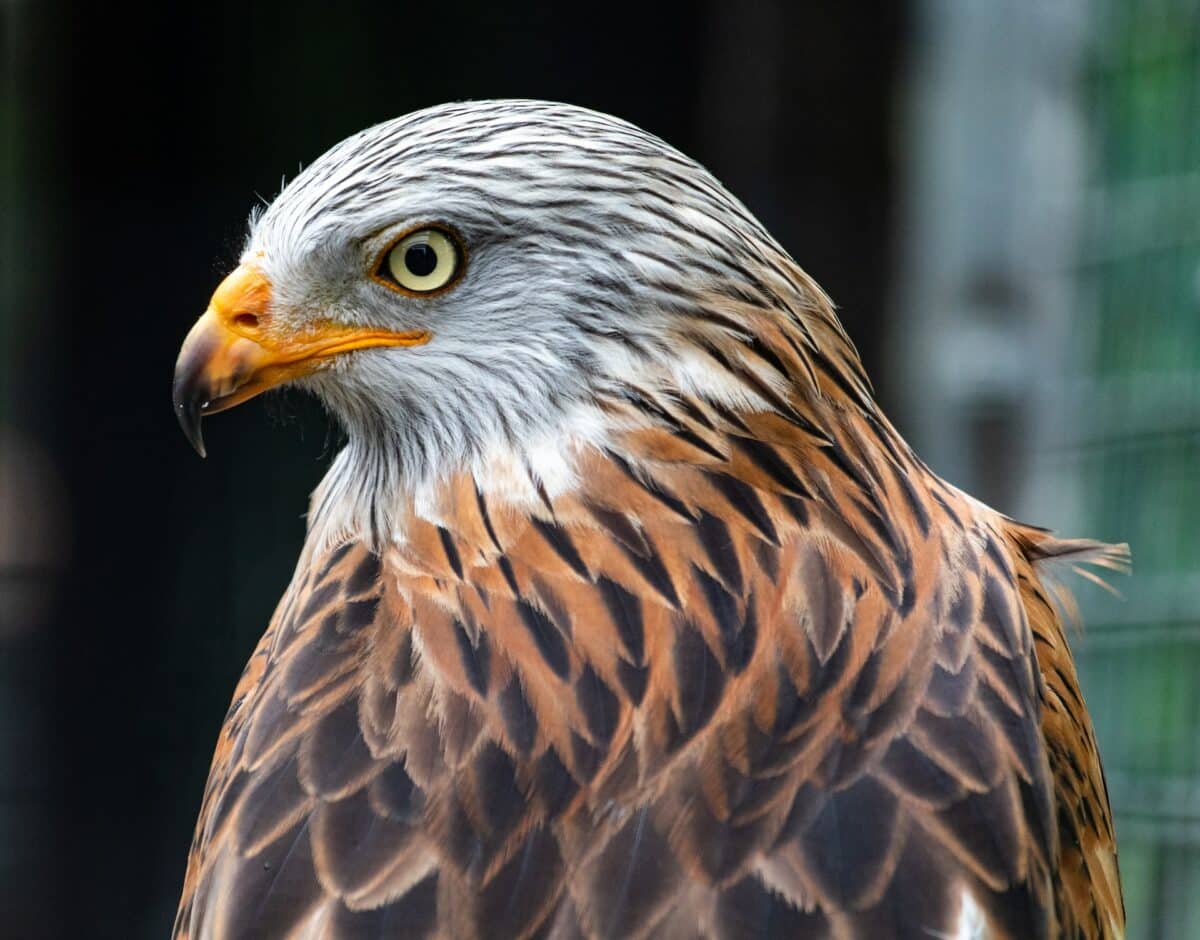
| Key Points |
| Falcons and hawks are birds of prey. Both these birds are deadly predators with immense speed and strength. |
| Falcons exist worldwide in many habitats and exist on every continent except Antarctica. On the other hand, Hawks prefer open habitats like deserts and fields. |
| In general, Hawks are smaller birds than falcons. Hawks are large birds but have shorter wings than falcons. Hawks and falcons exhibit sexual dimorphism just like other raptors do.Their length can vary from 12 to 28 inches. Falcon birds, on the other hand, can range from 13 to 23 inches. |
| Falcons and hawks are often confused between each other due to their similar appearance; however, when observed closely, several differences can be found in their patterns, colors, wings, and head shape. |
| Both these birds are apex predators and can be equally dangerous with their different hunting techniques, in which hawks primarily use their talons to kill, and falcons primarily use their beaks. |
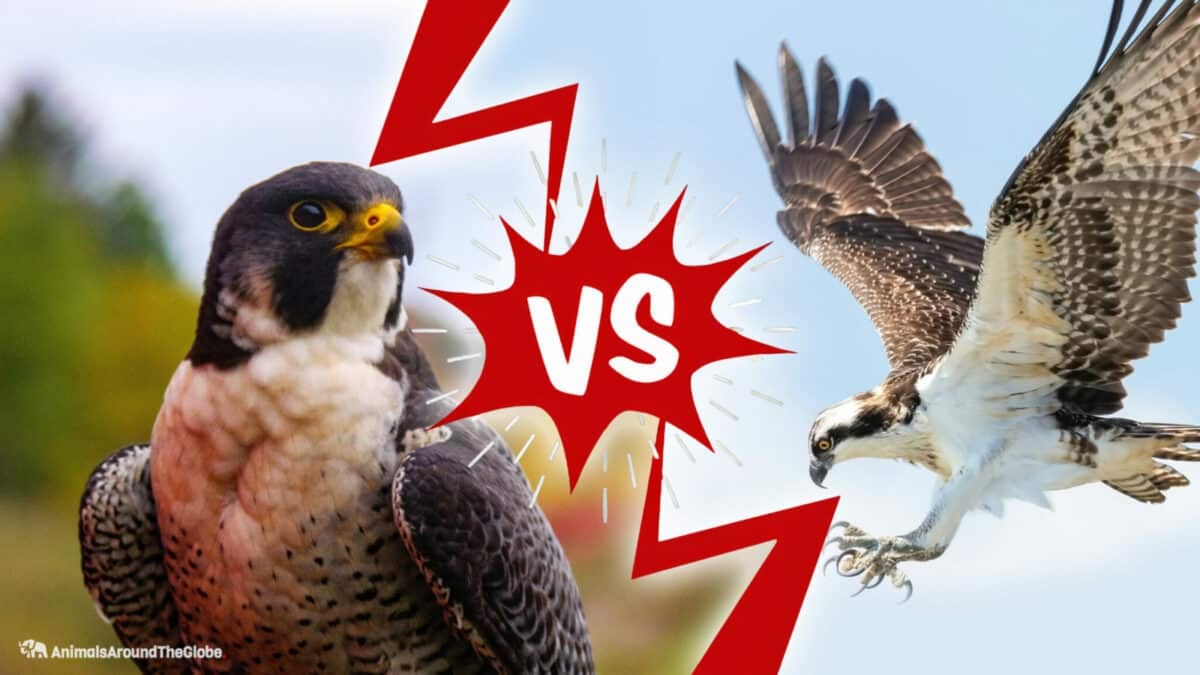
In conclusion, hawks and falcons are birds of prey that slightly resemble one another, but the reality is that they are different species and are unique in their particular ways.
Falcons are typically smaller but also faster. The hawks have more raw power as they’re bigger. Both these birds are apex predators (on top of their food chains) and can be highly dangerous with their different hunting techniques Hawks primarily use their talons to kill and falcons primarily use their beaks.
Thank you for reading this article on the falcon vs. hawk! Two other birds that are frequently confused is the emu and the ostrich. Read this article to learn how to differentiate between them.
Join our Forum for free today!


